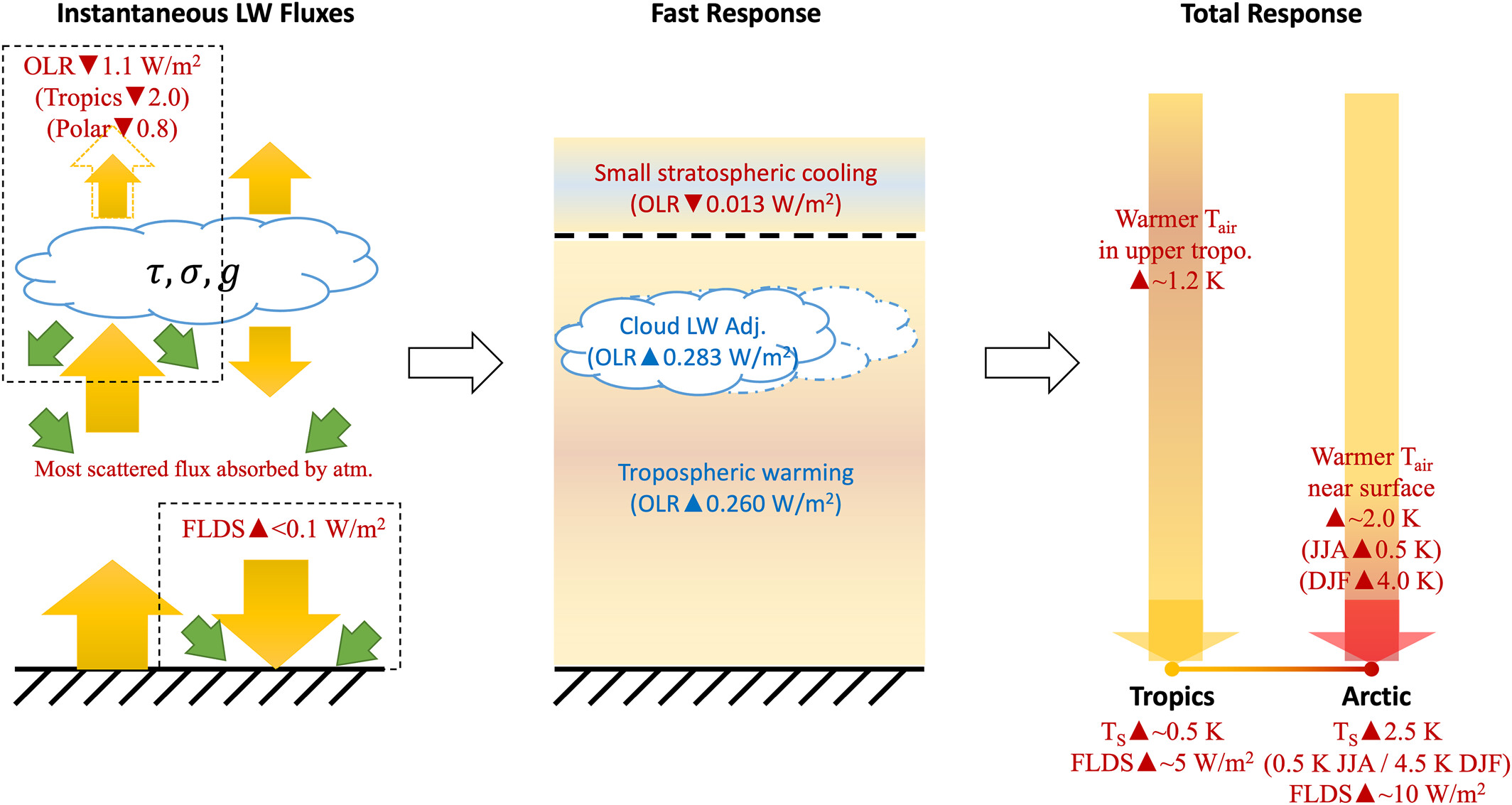A Refined Understanding of the Ice Cloud Longwave Scattering Effects in Climate Model
The Science
Most climate models neglect cloud longwave (LW) scattering to save computational costs because LW absorption by greenhouse gases and clouds is more significant than the LW scattering effect by clouds. Ignoring cloud LW scattering directly overestimates outgoing longwave radiation (OLR). This study included ice-cloud LW scattering treatment in the Exascale Energy Earth System Model (E3SM) version 2 and ran fully-coupled simulations, prescribed sea surface temperature simulations, and offline radiative transfer calculations to comprehensively assess the impact of ice-cloud LW scattering on global climate simulation.
The Impact
As more than 90% of the current models used in the IPCC assessment do not include the physics of cloud longwave scattering, this study presents a comprehensive evaluation of its impacts on the simulated mean-state climate and climate change projection. This helps reveal compensating biases in the simulations when cloud longwave scattering is not included.

Figure 1. Schematic summary of the instantaneous radiative effect (left), fast response (middle), and total responses (right) due to the inclusion of cloud LW scattering in the E3SMv2. Only prominent features are presented in the diagram. All red texts indicate a warming factor (i.e., increasing temperature and reducing outgoing longwave radiation (OLR)), while blue texts indicate a cooling factor (i.e., decreasing temperature and increasing OLR).
Summary
Clouds are an essential mediator in the climate system because they can reflect solar radiation back to space and block longwave radiation emitted below reaching the top of the atmosphere by either absorbing it or scattering it elsewhere. Such longwave scattering physics is deemed less important and thus neglected in most climate models to save computational time. The scientists in this study incorporated this mechanism into the E3SM version 2 and ran pairs of simulations, with or without cloud scattering, to see how it would affect the simulated global climate. Figure 1 summarizes the radiative and temperature responses to the inclusion of ice cloud LW scattering. They found that cloud longwave scattering reduces the longwave radiation that goes to space. Such reduction of outgoing longwave radiation is strongest in the tropics. Compared to the simulation without longwave scattering, the mean-state surface temperature change is larger in the Arctic than in the tropics, which is primarily caused by the slow response to the inclusion of scattering. The study also assessed to what extent the inclusion of cloud longwave scattering can affect the simulated response to an abrupt 4 × CO2 increase. The conclusion was that it can increase the cloud feedback strength by ∼10%, but overall, the impact is not statistically significant.
Publication
- Fan, Chongxing, Yi-Hsuan Chen, Xiuhong Chen, Wuyin Lin, Ping Yang, and Xianglei Huang. 2023. “A Refined Understanding of the Ice Cloud Longwave Scattering Effects in Climate Model”. Journal of Advances in Modeling Earth Systems 15. doi:10.1029/2023MS003810.
Funding
- This work was supported by the Earth System Model Development program area of the Department of Energy, Office of Science, Biological and Environmental Research program.
Contact
- Xianglei Huang, University of Michigan
This article is a part of the E3SM “Floating Points” Newsletter, to read the full Newsletter check:


